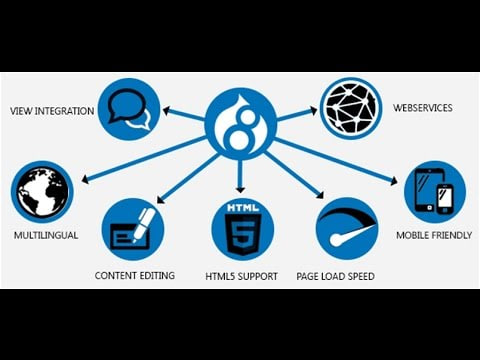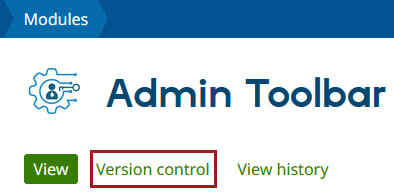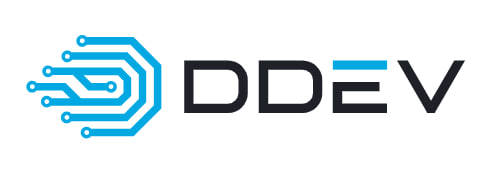Drupal Best Practices
By Alex Carter on September 25, 2024
Drupal is a famous open-source CMS. It allows you to create unique sites and applications no matter how much experience you have. However, it might be difficult to figure it all out when you just start working with this platform.
We want to simplify this experience for you and make it smoother. So, keep reading and learn about some tips and best practices for working with Drupal.
All about Drupal

First, let’s talk more about what Drupal is and its main characteristics. We’ve already mentioned that it’s an open-source system. So, it’s a perfect alternative if you need a highly personalized and secure alternative to build a website.
One of its main strengths is modular architecture. It allows you to extend functionality through a huge library of contributed modules. This makes it an ideal choice if you need more customized solutions.
The platform also supports developer collaboration tools. It lets your team work efficiently on large-scale projects through
- Version control;
- Automated testing;
- Issue-tracking systems.
Also, Drupal offers advanced user management. So, you get to assign specific permissions to different roles. It gives you a lot of flexibility and supports multiple languages.
Basic Drupal Coding Standards
Drupal follows strict coding standards to guarantee consistency and readability. You should stick to all these standards if you want your code to be accepted in the ecosystem.
Its guidelines are based on the PSR-12 coding style. Plus, it has additional project-specific rules. Some general principles are
- Use camelCase for function and variable names;
- Use snake_case for file names and database columns;
- Indent with two spaces instead of tabs;
- Use single quotes for strings unless double quotes are necessary;
- Follow 80-character line limits for readability;
- Avoid trailing whitespace and unnecessary blank lines.
You can always visit their site to learn more about other specifics. Make sure to get familiar with all the standard changes before starting your development with Drupal.
Top Tips and Practices for Drupal Development
You already know the fundamental concepts of Drupal. It can offer you a lot of flexibility and personalization possibilities. Now, you’re probably curious about how to approach this platform.
Following these tips and practices will be useful no matter if you’re a beginner or an advanced user.
Plan Your Project Structure
You have to plan your project’s architecture carefully before you start coding. Define the taxonomies and user roles to achieve a scalable structure. Here are some aspects to consider:
- Identify the key content types and fields you need for the site;
- Define relationships between content entities (use reference fields and taxonomies);
- Establish a clear permission structure to manage user access;
- Create a content workflow strategy.
A smart plan will let you minimize unnecessary rework and improve the maintainability of your Drupal site.
Use Configuration Management
Drupal’s configuration management system allows you to export and import settings across different environments. That way your development and production environments remain consistent.
We recommend storing configuration changes in version control to track modifications. Avoid making them directly in the production environment. Apply them through a controlled deployment process instead.
Also, you can use the Configuration Split module to handle different configurations for various environments.

Plus, you have to use the drush config-export and drush config-import commands to manage structures efficiently.
Employ APIs

Drupal offers many different APIs to help you build powerful applications. Some of the main alternatives you can use are
- Access policy;
- AJAX;
- Block;
- Cache;
- Database;
- Filter;
- Layout, and much more.
All these APIs are compatible with core functionality and third-party modules. It allows them to improve the stability of your application.
Follow Coding Standards
We’ve already mentioned some of the fundamental coding standards for Drupal. You can ensure consistency and readability by following them. It makes collaboration among all team members way easier.
Use PHP CodeSniffer with Drupal coding standards enabled to check the quality.

Try to write clean and reusable code to improve maintainability. Also, make sure to document everything using proper comments for better readability for other developers.
Optimize Performance
Performance optimization is necessary for a smooth user experience. Here are a few tips that might help you improve it:
- Use Render and Dynamic caching to reduce load times;
- Implement Lazy Loading for images and compress large media files;
- Use Entity Query instead of direct SQL queries;
- Offload static assets to a CDN for faster load times;
- Aggregate and compress front-end assets.
Use Drush and Composer
Drush and Composer simplify development by automating common tasks and managing dependencies.
You can use Drush for executing repetitive commands, like
- Cache clearing;
- Database updates;
- Module installations.
Composer will help you control dependencies to prevent conflicts between modules. Keep a composer.lock file in version control to guarantee stability in all environments.
Also, you need to regularly update dependencies with composer update. Make sure to test them in the staging environment before deployment.
Implement Version Control
Next, you have to use Git for version control. It will improve your collaboration efforts and help you track all the changes.
Each project in the Drupal system will have a separate Git repository. You can access it through the Admin Toolbar.

Here you’ll see all the source links and a list of all activities.
Some other practices to follow are:
- Use a structured branching strategy to manage feature development and releases;
- Exclude sensitive files like settings.php and credentials;
- Apply clear commit messages;
- Regularly push changes to a remote repository.
Develop Locally
Local development makes your environment more controlled. It allows you to test new features and debug issues before deploying to a live site.
The Drupal community recommends using a DDEV solution for this purpose. Make sure you have the necessary system privileges to download and set it up.

Here are the steps you should follow:
- Install DDEV and create a new project;
- Initialize it using ddev config;
- Launch your site with ddev launch;
- Use ddev drush user:login to generate a one-time login link.
You can employ different customization options after you’re done with the setup.
Security for Drupal
The last thing we want to talk about is safety measures for Drupal. Just like any other system it requires proper protection against threats. We gathered some security practices for you to follow.
Update Core and Modules
Developers often release updates that fix security vulnerabilities and improve performance. Enable update notifications in Drupal to know about all the latest patches. Always test them in a staging environment to avoid compatibility problems.
Use Secure Hosting
Your choice of hosting provider plays a big role in the security of your site. Check if they follow strong security policies and offer regular backups.
Managed Drupal hosting solutions usually provide
- Automatic patches;
- DDoS protection;
- WAF to block malicious traffic.
Strong Authentication
Weak authentication and excessive user privileges are common safety risks. So, to limit them, we recommend you
- Enforce strong password policies;
- Use 2FA;
- Limit the number of administrative accounts;
- Restrict user permissions.
Secure the Drupal Configuration
Next, you have to adjust Drupal’s configuration settings. Select appropriate file permissions to avoid modification of sensitive files.
Store these configuration settings outside the web root to prevent exposure. Plus, disable error reporting on live sites to prevent leakage of important information.
Protect Against SQL Injection and XSS
These attacks happen quite often to web applications. You can use Drupal’s built-in database abstraction layer to prevent SQL injection. Also, validate and sanitize all user inputs before processing.
Use CSP to limit the sources of script execution. It will reduce the chances of XSS attacks.
HTTPS and Secure Cookies
You need to encrypt data transmissions. Install an SSL certificate and implement HTTPS for that purpose. It will protect your login credentials and personal data.
Also, set secure and HttpOnly flags on cookies. It will help you stop session hijacking by making cookies accessible through safe channels.
Backup and Recovery Strategies
No security measure gives you a full guarantee. So, you need a backup strategy to mitigate data loss in case of cyberattacks or hardware failures.
Schedule automatic backups of the database and site files. Store these backups in a secure location. You can use an offsite server or cloud storage with encryption. Also, try to test your recovery procedures periodically.
Conclusion
Drupal is a popular open-source platform for creating customized sites and apps. It offers different collaboration and user management mechanisms.
You need to follow the main coding standards and create a proper security strategy to get the most out of Drupal. Make sure to use version control and configuration systems. Also, check out all the APIs it offers for better functionality.
Hope that you found something useful! Follow the tips and practices we outlined for a smooth development experience.
Posted in blog, Web Applications
Alex Carter
Alex Carter is a cybersecurity enthusiast and tech writer with a passion for online privacy, website performance, and digital security. With years of experience in web monitoring and threat prevention, Alex simplifies complex topics to help businesses and developers safeguard their online presence. When not exploring the latest in cybersecurity, Alex enjoys testing new tech tools and sharing insights on best practices for a secure web.
Web & Cloud
Monitoring
